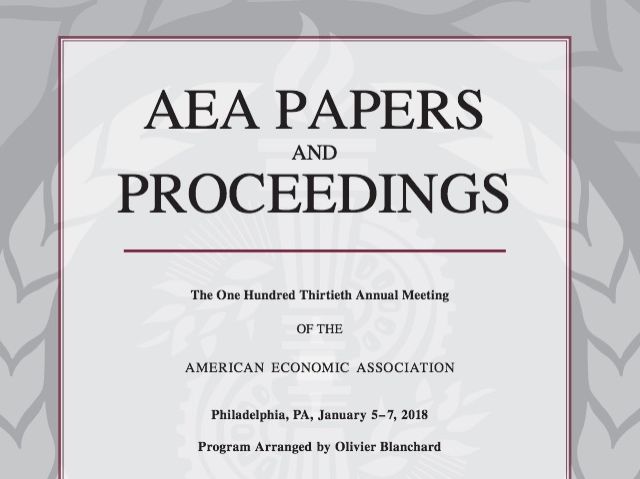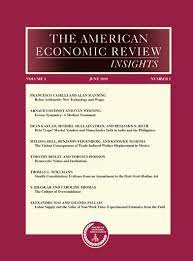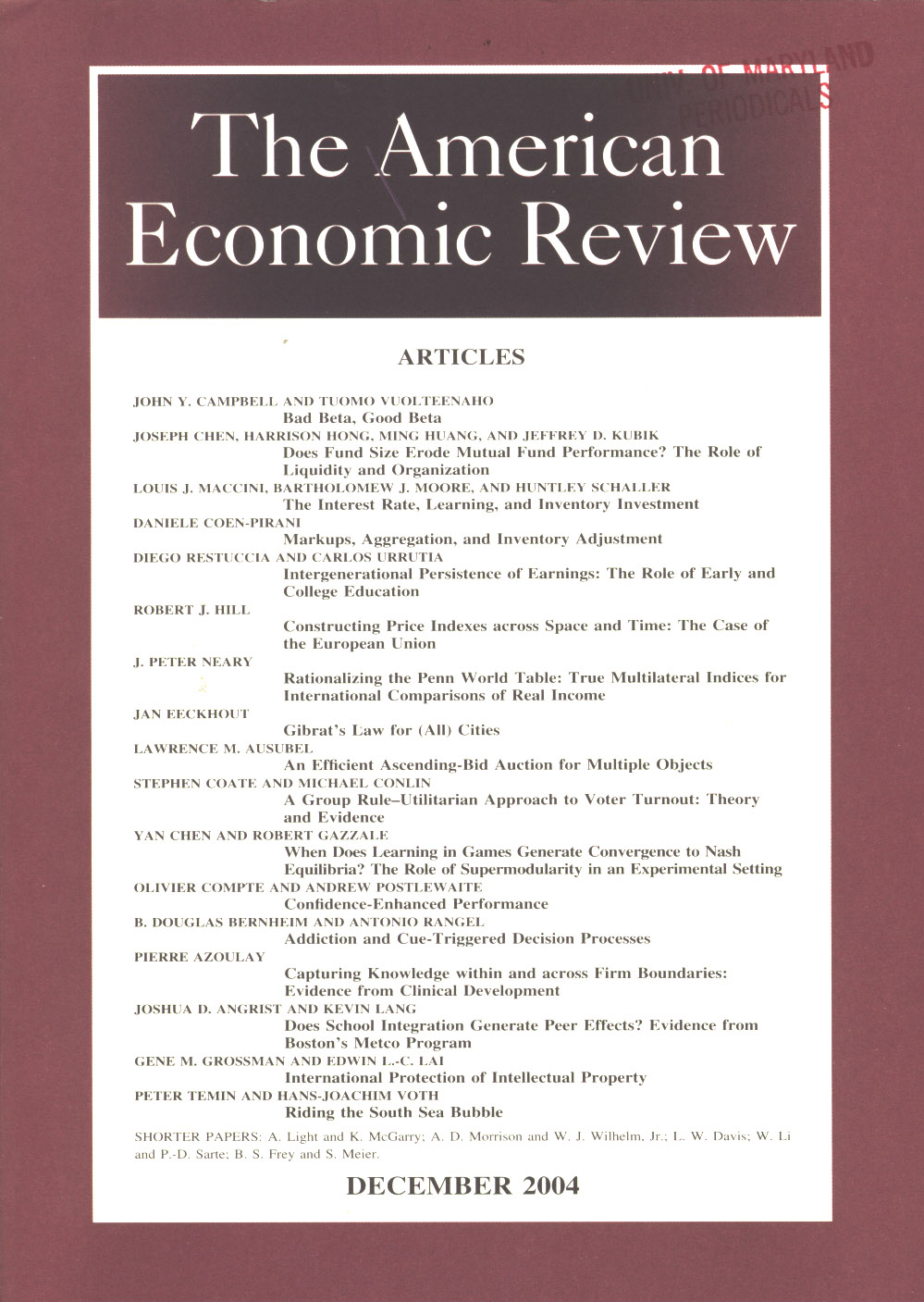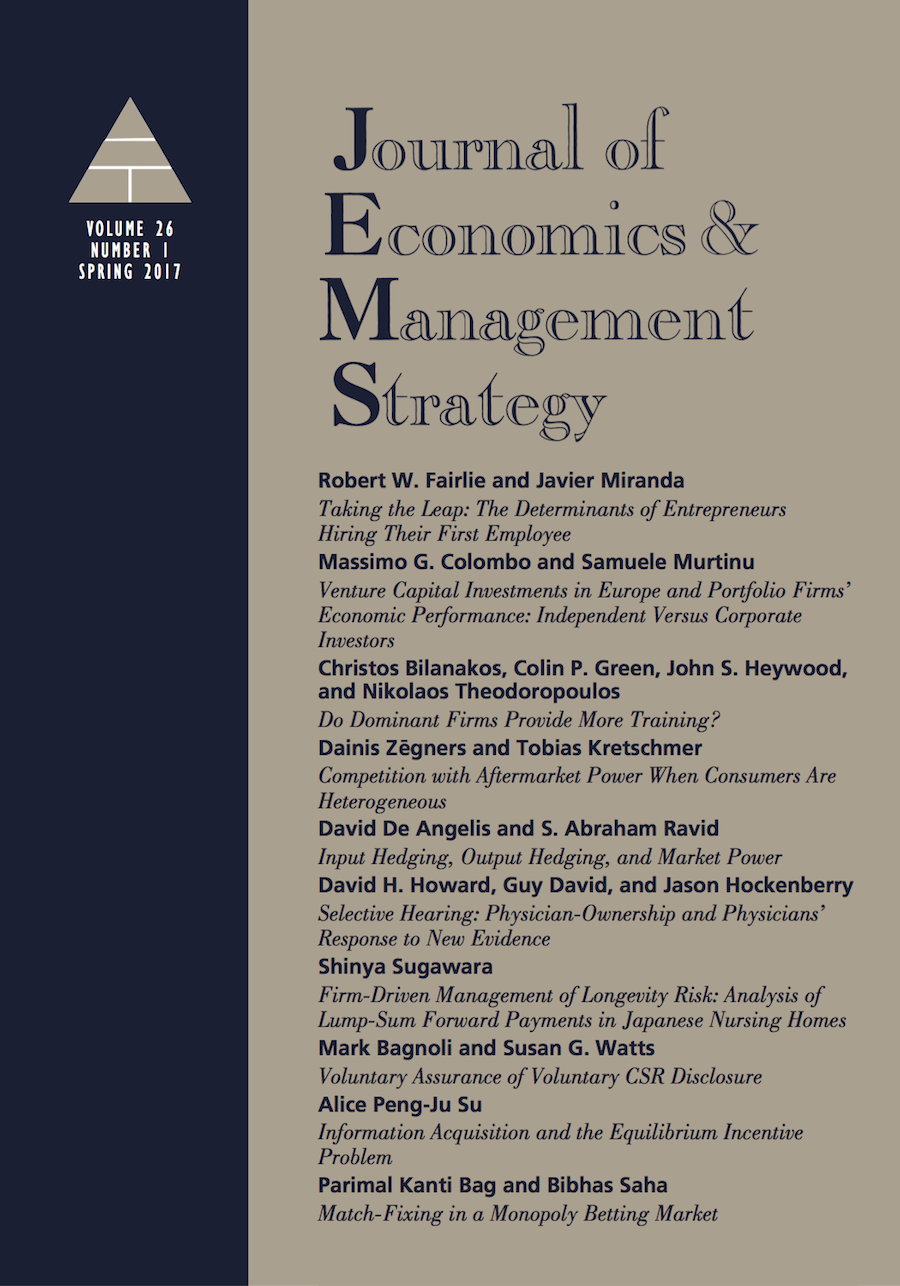Entrepreneurship, Innovation, and Productivity Growth
This group tackles research topics that are of relevance for our understanding of patterns of innovation and productivity growth and explores implications for workers and firms. Areas of particular focus include the decline in business dynamism, the growth in automation, entrepreneurship and innovation, and supply chains.
Research Cluster
Productivity and InstitutionsYour contact

Mitglied - Department Structural Change and Productivity
Refereed Publications

The Characteristics and Geographic Distribution of Robot Hubs in U.S. Manufacturing Establishments
in: American Economic Association Papers and Proceedings, May 2023
Abstract
We use establishment-level data from the US Census Bureau's Annual Survey of Manufactures to study the characteristics and geographic locations of investments in robots. We find that the distribution of robots is highly skewed across locations. Some locations, which we call Robot Hubs, have far more robots than one would expect even after accounting for industry and manufacturing employment. We characterize these Robot Hubs along several industry, demographic, and institutional dimensions. The presences of robot integrators, which specialize in helping manufacturers install robots, and of higher levels of union membership are positively correlated with being a Robot Hub.

Immigration and Entrepreneurship in the United States
in: American Economic Review: Insights, No. 1, 2022
Abstract
Immigration can expand labor supply and create greater competition for native-born workers. But immigrants may also start new firms, expanding labor demand. This paper uses U.S. administrative data and other data resources to study the role of immigrants in entrepreneurship. We ask how often immigrants start companies, how many jobs these firms create, and how these firms compare with those founded by U.S.-born individuals. A simple model provides a measurement framework for addressing the dual roles of immigrants as founders and workers. The findings suggest that immigrants act more as "job creators" than "job takers" and that non-U.S. born founders play outsized roles in U.S. high-growth entrepreneurship

Changing Business Dynamism and Productivity: Shocks versus Responsiveness
in: American Economic Review, No. 12, 2020
Abstract
The pace of job reallocation has declined in the United States in recent decades. We draw insight from canonical models of business dynamics in which reallocation can decline due to (i) lower dispersion of idiosyncratic shocks faced by businesses, or (ii) weaker marginal responsiveness of businesses to shocks. We show that shock dispersion has actually risen, while the responsiveness of business-level employment to productivity has weakened. Moreover, declining responsiveness can account for a significant fraction of the decline in the pace of job reallocation, and we find suggestive evidence this has been a drag on aggregate productivity.

Age and High-Growth Entrepreneurship
in: American Economic Review: Insights, No. 1, 2020
Abstract
Many observers, and many investors, believe that young people are especially likely to produce the most successful new firms. Integrating administrative data on firms, workers, and owners, we study start-ups systematically in the United States and find that successful entrepreneurs are middle-aged, not young. The mean age at founding for the 1-in-1,000 fastest growing new ventures is 45.0. The findings are similar when considering high-technology sectors, entrepreneurial hubs, and successful firm exits. Prior experience in the specific industry predicts much greater rates of entrepreneurial success. These findings strongly reject common hypotheses that emphasize youth as a key trait of successful entrepreneurs.

Business Dynamics Statistics of High Tech Industries
in: Journal of Economics and Management Strategy, No. 1, 2020
Abstract
Modern market economies are characterized by the reallocation of resources from less productive, less valuable activities to more productive, more valuable ones. Businesses in the High Tech sector play a particularly important role in this reallocation by introducing new products and services that impact the entire economy. In this paper we describe an extension to the Census Bureau’s Business Dynamics Statistics that tracks job creation, job destruction, startups, and exits by firm and establishment characteristics, including sector, firm age, and firm size in the High Tech sector. We preview the resulting statistics, showing the structural shifts in the High Tech sector over the past 30 years, including the surge of entry and young firm activity in the 1990s that reversed abruptly in the early‐2000s.
Working Papers

Early-Stage Business Formation: An Analysis of Applications for Employer Identification Numbers
in: NBER Working Paper, No. 24364, 2018
Abstract
This paper reports on the development and analysis of a newly constructed dataset on the early stages of business formation. The data are based on applications for Employer Identification Numbers (EINs) submitted in the United States, known as IRS Form SS-4 filings. The goal of the research is to develop high-frequency indicators of business formation at the national, state, and local levels. The analysis indicates that EIN applications provide forward-looking and very timely information on business formation. The signal of business formation provided by counts of applications is improved by using the characteristics of the applications to model the likelihood that applicants become employer businesses. The results also suggest that EIN applications are related to economic activity at the local level. For example, application activity is higher in counties that experienced higher employment growth since the end of the Great Recession, and application counts grew more rapidly in counties engaged in shale oil and gas extraction. Finally, the paper provides a description of new public-use dataset, the “Business Formation Statistics (BFS),” that contains new data series on business applications and formation. The initial release of the BFS shows that the number of business applications in the 3rd quarter of 2017 that have relatively high likelihood of becoming job creators is still far below pre-Great Recession levels.













